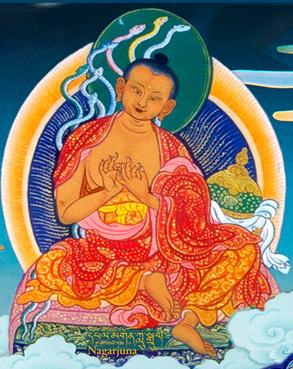Madhyamika: Difference between revisions
No edit summary |
No edit summary |
||
| Line 13: | Line 13: | ||
*The other, [[Bhavaviveka]], thought it was acceptable to use what is called “autonomous syllogism” (''svatantra''). This approach is called '''svatantrika'''. | *The other, [[Bhavaviveka]], thought it was acceptable to use what is called “autonomous syllogism” (''svatantra''). This approach is called '''svatantrika'''. | ||
==External | ==Internal links== | ||
*[[Four great logical arguments of the Middle Way]] | |||
==External links== | |||
*[http://www.lotsawahouse.org/middle_way.html Middle Way Series on Lotsawa House] | *[http://www.lotsawahouse.org/middle_way.html Middle Way Series on Lotsawa House] | ||
Revision as of 02:48, 2 January 2008

Madhyamika (Tib. umapa; wyl.dbu ma pa). The followers of the Middle Way philosophy, which teaches freedom from all extremes. They say that just as truly existent external phenomena were refuted by the Chittamatra school, a truly existent perceiving mind must also be refuted, since both are equally lacking in inherent existence, being mere dependent originations.
The Madhyamika school originates with Nagarjuna, who commented upon the direct meaning of the Prajñaparamita sutras in his Collection of Reasoning, which includes the famous Root Verses on the Middle Way.
Subschools
There are two ‘schools’ or streams within the Madhyamika: the Svatantrika and the Prasangika.
These two approaches came about when two Indian masters wrote slightly different commentaries to Nagarjuna’s Root Verses text.
- Buddhapalita insisted that the followers of Madhyamika should not make any independent assertions, but merely show the absurd consequences of holding to any extreme position. This approach is called prasangika, meaning “consequence”.
- The other, Bhavaviveka, thought it was acceptable to use what is called “autonomous syllogism” (svatantra). This approach is called svatantrika.